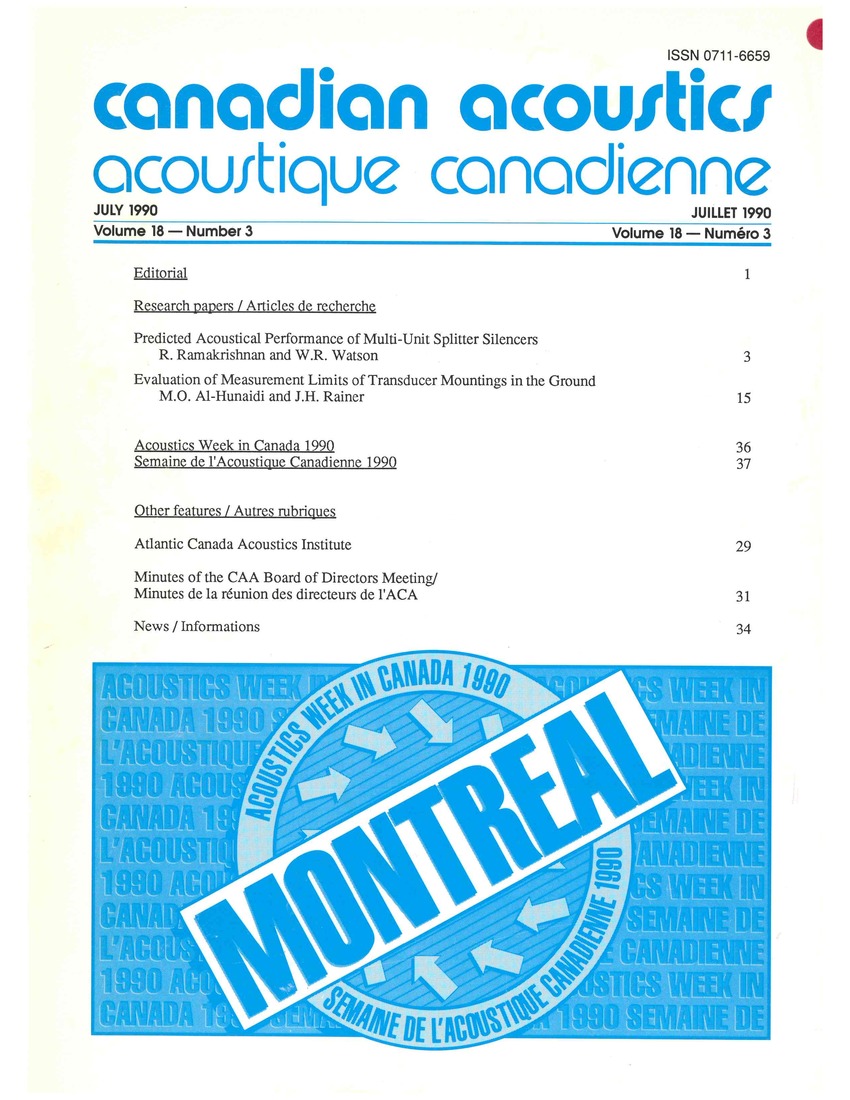Evaluation of measurement limits of transducer mountings in the ground
Keywords:
acoustic transducers, seismometers, vibration measurement, measurement limits, transducer mountings, ground, ground vibration measurements, tapered stake, wood plate, frequency range, small instrumented hammer, impact force, response, two-channel frequency analyzer, stiff clay, fine loose sand, embedded box mounting, 120 Hz, 200 Hz, embedded Al boxAbstract
The distortion of ground vibration measurements by different methods for mounting transducers in the ground is investigated experimentally. The following mountings are considered: (i) tapered stake having cruciform cross-section; (ii) wood plate attached to the ground with threaded thin rods; and (iii) embedded aluminum box of density equivalent to that of soil. The frequency range over which acceptable measurements of ground vibrations can be made is determined for each of these mountings using frequency response tests. These tests are performed by lightly impacting the mounting with a small instrumented hammer. The impact force and the response of the mounting were recorded and analyzed on a two-channel frequency analyzer. Tests were performed at two sites: stiff clay and fine loose sand. Results show that the frequency limit for acceptable accuracy was about 200 Hz for the plate and stake mountings, whereas that for the embedded box mounting was about 120 Hz. The plate and stake mountings were found more convenient to use than the embedded box mountingAdditional Files
Published
How to Cite
Issue
Section
License
Author Licensing Addendum
This Licensing Addendum ("Addendum") is entered into between the undersigned Author(s) and Canadian Acoustics journal published by the Canadian Acoustical Association (hereinafter referred to as the "Publisher"). The Author(s) and the Publisher agree as follows:
-
Retained Rights: The Author(s) retain(s) the following rights:
- The right to reproduce, distribute, and publicly display the Work on the Author's personal website or the website of the Author's institution.
- The right to use the Work in the Author's teaching activities and presentations.
- The right to include the Work in a compilation for the Author's personal use, not for sale.
-
Grant of License: The Author(s) grant(s) to the Publisher a worldwide exclusive license to publish, reproduce, distribute, and display the Work in Canadian Acoustics and any other formats and media deemed appropriate by the Publisher.
-
Attribution: The Publisher agrees to include proper attribution to the Author(s) in all publications and reproductions of the Work.
-
No Conflict: This Addendum is intended to be in harmony with, and not in conflict with, the terms and conditions of the original agreement entered into between the Author(s) and the Publisher.
-
Copyright Clause: Copyright on articles is held by the Author(s). The corresponding Author has the right to grant on behalf of all Authors and does grant on behalf of all Authors, a worldwide exclusive license to the Publisher and its licensees in perpetuity, in all forms, formats, and media (whether known now or created in the future), including but not limited to the rights to publish, reproduce, distribute, display, store, translate, create adaptations, reprints, include within collections, and create summaries, extracts, and/or abstracts of the Contribution.


